BY MIKE METTLER — FEBRUARY 3, 2016
The concept of being a true global artist didn’t really exist until the rise of Yanni, the visionary Greek keyboardist/composer who’s played his own unique brand of instrumental music for over 5 million concertgoers worldwide (and counting). Sometimes, you’ll find him and his top-tier “United Nations” orchestra playing for audiences gathered at international landmark locations like the Acropolis in Greece, The Forbidden City of China, the Taj Mahal in India, and The Great Pyramids of Egypt — the latter event having recently been shot in 4K and coming soon to Blu-ray and DVD, after a spring airing on PBS.
Yanni’s broad sonic palette covers many musical styles — something that’s no accident, given his voracious consumption of music as a child. “I grew up in Greece, so I was exposed to everything,” he explains. “Any kind of music you can imagine, any kind of rhythm you can imagine: World music, and all classical music too — I loved Bach, for example. I also liked Led Zeppelin, Yes, Genesis, Jethro Tull, and Deep Purple. You wouldn’t believe the kind of bands I used to listen to.” (Ahh, but I do…)
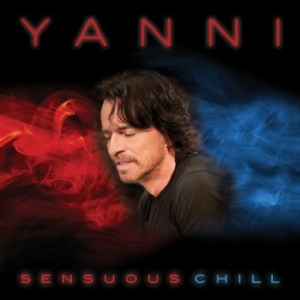 Many of these ingrained sensibilities have been channeled into the fine melodic multicultural wash of his new album Sensuous Chill (Portrait/Sony Masterworks), from the electronic drive of “Rapture,” the percussive pulse of “Our Days,” and the surface-noise sizzle of “Desert Soul.” Laughs Yanni, “I know why you like that one — it’s because it has that vinyl sound in there!” The man born as Giánnis Chrysomállis in Kalamata, Greece in 1954 then proceeds to mimic the sound of a needle dropping onto an LP that’s been played more than a few times, a sound we lifetime vinyl lovers know quite intimately. He smiles and repeats, “It’s on purpose. It’s on purpose.”
Many of these ingrained sensibilities have been channeled into the fine melodic multicultural wash of his new album Sensuous Chill (Portrait/Sony Masterworks), from the electronic drive of “Rapture,” the percussive pulse of “Our Days,” and the surface-noise sizzle of “Desert Soul.” Laughs Yanni, “I know why you like that one — it’s because it has that vinyl sound in there!” The man born as Giánnis Chrysomállis in Kalamata, Greece in 1954 then proceeds to mimic the sound of a needle dropping onto an LP that’s been played more than a few times, a sound we lifetime vinyl lovers know quite intimately. He smiles and repeats, “It’s on purpose. It’s on purpose.”
During a recent sitdown in a Sony Music conference room in New York, Yanni, 61, and I discussed the shift from analog to digital, his overall recording goals, and his passion for pushing the boundaries of surround sound.
Mike Mettler: As someone who has perfect pitch, do you automatically know what sounds best or what may need to be changed when you’re recording? How do you decide that?
Yanni: Perfect pitch is something you can use. It’s very useful, because when you hear a song, it’s like somebody is reading a book to you. It’s not like low pitch, medium pitch, high pitch. It’s [goes quickly through the tonal scale, known as solfège], “do re mi fa sol la ti do.” A “do” can only be a “do.” A “la” can only be a “la.” It’s like words. That’s what it is. It’s somebody talking to you. So when I listen to a piece of music, I know every chord, and every note — even if I’ve never heard it before. And that’s very useful.
Mettler: Are you a fan of analog recording, digital recording, or a combination of both?
Yanni: Oh, both. I was one of the first ones to travel away from analog to digital, because I knew that was the future. I didn’t like the hiss and the stuff that we had in the old days, like those scratchy records. I knew that digital was the future, and you knew it was going to be squares.
You were now dealing with a brand new 24-track digital recorder that had nothing to do with what you’ve been recording with all your life, but you had to figure out how to deal with it. How do you adjust the sound so you can compensate for the fact that instead of a smooth line, it becomes a square or a triangle?
Mettler: Is it preferable to your ear to hear things in high resolution?
Yanni: Yes. The higher the resolution, the better it is. I use Pro Tools a lot — the latest and greatest version of it now, as high as you can get. And that helps, because those little squares become smaller and smaller and smaller. And if you use the right kinds of equalizers and plug-ins — it does not bother me.
 I like the increase in the dynamic range, which makes it more realistic —especially if you’re a piano player, and you’re playing a 9-foot grand that’s worth $140,000. You hear it acoustically, and then you try to record it, and then when you listen back… (chuckles)
I like the increase in the dynamic range, which makes it more realistic —especially if you’re a piano player, and you’re playing a 9-foot grand that’s worth $140,000. You hear it acoustically, and then you try to record it, and then when you listen back… (chuckles)
Mettler: The playback is not equal to what you just heard yourself play, which must be frustrating to your ear.
Yanni: It is, but it’s gotten really good — to the point where, electronically, you can manipulate it, and by using different types of microphones in different positions. It’s taken years and years of going through that: “Move it a bit this way. Now move it a bit that way.” Out-of-phase sometimes, in-phase other times. Using different plug-ins. All kinds of little tricks to make it more palatable.
Mettler: Tell me about your goals for the sound design of Sensuous Chill.
Yanni: It’s actually a very special album, a very unique album that’s not a representative of my life’s work, but I love it. The album was meant to be that way. It has a specific sound to it. It’s only taken me 5 years to make it.
Mettler: Oh, is that all? (both laugh)
Yanni: That’s all! (chuckles) I’ve been planning the songs very carefully — who I worked with, what sounds I used and why, and what sequence the songs to come in, one after the other. All of these things are critical. The album itself has become a song. It’s not meant for you to just pick up a song in the middle of it. It’s meant to be put on, put on REPEAT, and let it play.
Mettler: Personally, I think sequencing is a lost art in the digital age. If I’m presented with an album by an artist, it was specifically put in that order for a reason. With Sensuous Chill, you’re taking me on a specific journey from “Thirst for Life” through “I’m So.” And I owe you that respect to get the payoff you’ve laid out for me, the listener.
Yanni: Yeah. I like the way you phrased all this, because you used my own words! (both laugh) It is a journey, and I am taking you through it, and I want to be able to lead your through it. I want to bring you into energy and give you energy, without you realizing I’m doing this to you.
On this particular album, nobody’s going to jump in the middle of a song and go, “Hey, I’m doing a guitar solo; listen to this!” Or, “By the way, here’s a violin solo; listen to this!” It’s meant to take you through a journey. It’s supposed to be, first of all, sensuous — that’s why it’s called Sensuous Chill. And it’s a chill album; it’s light, for the most part. And then it’s supposed to be melodious, with some rhythm, and it’s also supposed to be sexy. (smiles) I insisted on that. You have to have a feeling for it, and a passion with it. But I didn’t want you to know when I am actually elevating your energy and where I’m taking you. Because I’m taking you a lot of different places.
Mettler: It’s like a live set, in a way. You’re taking us through peaks and valleys in a show. You can’t just keep going up the same ramp. You need those crests so you can go back down, and then bring people back up.
Yanni: Absolutely, absolutely.
Mettler: To me, you could almost play this album live from beginning to end in this order. The audience would be right there with you.
Yanni: It’ll hold. It’ll hold. You should be working with me, because you totally understand it! (both laugh)
Mettler: Well, I did grow up as an album guy! And on certain albums, Song 1 informs how you’ll feel about Song 6, once you get there.
Yanni: Of course! You can’t just jump. If I may be honest about it, the reason I made that album is, I made it for me. I wasn’t making an album for anybody — I was just trying to find something that I could listen to that was on the easier side, not so demanding of your attention: “Pay attention, it’s Beethoven’s Fifth! Come on!” Unless it’s grandiose, it’s not going to happen. I looked at all the Internet stations, and I couldn’t find it. Sometimes I would hear one song I’d like, then I’d hear 10 songs — and I apologize for saying this — of children playing with keyboards and synthesizers, you know? So as you can imagine, my brain has been used for music for a good 45 years now. My taste has developed. I’m a pretty difficult customer.
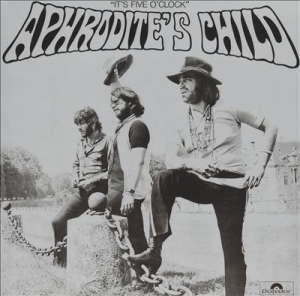 Mettler: So, growing up in Greece, did you listen to Aphrodite’s Child, Vangelis’ ’60s prog group?
Mettler: So, growing up in Greece, did you listen to Aphrodite’s Child, Vangelis’ ’60s prog group?
Yanni: (smiles) Oh yeah! I remember them. I absolutely loved them! You wouldn’t believe the kind of bands I used to listen to.
Mettler: I know people like to put labels on your music, but all of those influences thread through what you compose and play.
Yanni: It’s very difficult to categorize this music, because you have nowhere to go with me if you try.
Mettler: I think your name defines what you do. Yanni music is the kind of music you make, and we know what that is when we hear it.
Yanni: Actually, you said that better than I could. (laughs heartily) You can do this interview! You can ask them and answer yourself, because you’re doing a great job! (both laugh)
But you’re absolutely right. I couldn’t agree more than that with you. I want my freedom, you know. I like to be able to write music as I felt it and as I traveled around the world and heard new instruments, new ideas, and new rhythms. You know I grew up in Greece, so I wasn’t in America, getting the monochromatic boom boom boom boom — the same thing. I enjoyed all kinds of music and I enjoyed the English progressive rock, as you can tell from the bands I mentioned before.
But I also loved The Beatles. I loved melody. And melodies — that was out of necessity, because when I was starting out, obviously, I was very poor and didn’t have access to a lot of equipment, and I knew that the only thing that would make my music survive would be a very strong melody that was memorable, and would stay with the listener. I didn’t have access to what I have today — and that served me really well, because today, I’m playing songs I wrote 40 years ago, and they’re as fresh now as they were back then. Yes, they sound better now because I have better equipment — though “better” is somebody’s opinion — but I’m enjoying them.
And also the richness of it with the orchestra, instead of getting some cheap keyboard thing and pretending they’re playing the strings sound. You’re actually feeling it. It’s majestic, it’s powerful, and live, it’s very dramatic.
And, very gently, you can go down to a single note on a violin — and I do have [Samvel Yervinyan], the best violinist in the world right now, playing with me — just from that, developing into the biggest C major chord you’ve ever heard!
I played with rock and roll bands for many, many years, and I understand the dynamic ranges. And, by the way, that taught me a lot, playing with rock and roll bands — it taught me how to put on a concert, and how to present it. I loved rock and roll when I was growing up, but I came to an age/time where rock and roll did not express exactly what I really wanted to express.
Mettler: What do you think about people accessing music by way of streaming, like through Spotify?
Yanni: I’d rather people hear the music than not, but I’m so used to good quality that I insist to maintain the best quality that I can. Of course, once you let it leave your studio, you’re out of control. It just runs, and goes worldwide. You don’t know who hears it.
We just recently came from playing in Tunisia, for example, and I don’t believe I’ve sold a single album in Tunisia. But they all knew every single song of mine. Every single song, and all 27,000 people who showed up — they all knew every single song I played! (laughs) It was an amazing experience.
Mettler: When we were growing up, we had to vote with our dollars and had access to maybe one new album a week — which, after you bought it, you lived it over and over.
Yanni: (nods) You could really get inside it. And I actually prefer that time, where I could just enjoy an album for a long, long time. Once I came to America, I realized society’s pace of consumption of music or other kinds of media was faster. They would just listen to an album for 2 or 3 weeks, throw it aside, and get another one. And I’d say, “Hey, wait a minute. This one I’ve been listening to for 2 years, and I still love it.”
Mettler: Right — I still like pulling out Revolver, and continue to live it and live with it.
Yanni: There you go! (laughs)
Mettler: Do you have a favorite album you still go back to?
Yanni: To listen? That’s very uncommon for me to go listen to any specific albums anymore, but they’re in my mind. I’ve never forgotten them. Once in a while I hear a song and I go, “That’s real rock and roll! That’s Led Zeppelin! Check this out!” It’s just as good today as it was 45 years ago — enjoying it as a kid in Greece, mind you. I had never been to America yet.
Mettler: I’d love to hear you do a rearrangement of “Kashmir.”
Yanni: Ohhhh! That’s cool! That would be really cool! Something like that would be perfect for me to do.
Mettler: Jimmy Page and Robert Plant went to the Middle East and recorded a more “worldly” version of it later on. [They cut their longer, live version with an Egyptian/Moroccan orchestra on 1994’s No Quarter: Jimmy Page and Robert Plant Unledded, and also performed the song with an orchestra on their 1995 tour.]
Yanni: That Middle Eastern stuff is inside me. I grew up with it. (chuckles)
Mettler: On Sensuous Chill, I really like the way the melodies unfold at the beginning of certain songs through just the piano. I feel like I’m being “sung to” in the first few bars, even though there aren’t any lyrics.
Yanni: Somebody’s talking to you. It’s very intentional, because I am talking; I just don’t use words. There’s no need to use language, because I don’t want to lose the message. When I take a song to China, the Chinese people understand as much as the German people understand. If I wrote it in English, then anybody who doesn’t speak English loses half the message.
Mettler: To borrow from the rock idiom, Eric Clapton has often said he speaks better through his guitar than with his words. And you can go to any country where everyone can respond internally to what you’re playing.
Yanni: Mm-hmm. Actually, I have experienced that. I wasn’t really sure that that was going to be the truth when I was growing up, but I started doing instrumental music because I preferred it. It’s the difference between reading the book and making the movie. With the book, your imagination is much, much bigger, and your perception is you. With instrumental music, the result is the same — you make it yours. You make it be your story. It’s your interpretation of what I am trying. Obviously, I have a lot to do with trying to reach certain emotions and describe to you what I feel like and how I understand this emotion, and how to put it into notes and rhythms so that I can transmit it to the listener. And I prefer it like that, because then, you make it yours. You interpret it the way you want to interpret it.
Mettler: It’s as big as The Pyramids, to mention a place you’ve been to recently. You’ve been to all these grand places throughout the world, and have been able to equate them with the scope and ideas of your music in a live setting. So are we getting you at Mount Rushmore next, or…?
Yanni: (laughs) I don’t really know! I just finished the Pyramids [i.e., Live From The Great Pyramids Tour], and I have to tell you — it is the most spectacular video I have ever made. Both visually, because I shot it in 4K, and also because it’s in a special surround sound; nobody has that one. It’s a special music matrix that I have done for the surround. It took a long, long time. I just finished it a few weeks ago.
There are about 8,700 sound elements, just to create the surround sound for the audience. I want you to feel like you are in the 15th row center. You’re in the concert, and you’re watching the concert. And I think we have accomplished that. I also wanted you to feel the same way about the music, so I took another 200 or 360 tracks of audio for each song to accomplish that.
Mettler: Speaking as a surround-sound enthusiast, I can’t wait to hear it.
Yanni: I have never heard anything like this. It took a long time, and we worked very, very hard. Once we did the first pass, it was so good, but it took a long, long time, and we were so tired. But once you hear it that good, you can’t go back, you know?
And visually, it is stunning in 4K. They also shot some of the biggest fireworks you’ve ever seen in your life.
Mettler: So you’re saying my subwoofer better be ready to handle it?
Yanni: Oh, you’re going to hear it all. That was one of the challenges. The fireworks were so big and so loud, each one of them put out 150 decibels — each explosion was that big.
And the military did it. We had cannons and the mortars, which we could see the by the hundreds lined up around the Pyramids. We lit up the Giza Valley. You could see all the Pyramids, all at once.
We were very gentle in how we lit them. At the very beginning, we didn’t want to turn it into a disco effect for where you’re at. But during “Santorini,” I let it go. It was during that song where I say, “OK, let’s go. We’re going to do this.” You’re going to feel it. (laughs)
Mettler: Have you thought about doing surround for any of your studio pieces? Sensuous Chill seems like the perfect record for that.
Yanni: Definitely. I can do it, but it would take a long time. You know, I’ve seen and heard too many fake 5.1s done, but I have created my own very special matrix; it is the very best one I’ve seen or heard from anyone who does this.
There is a way to do it, but it is a trade secret. It is a real 5.1 surround. I don’t want to give it away, but there are certain rules that you have to follow with the volumes, and how you send something to the center. What do you do left and right, and where does it go in the back? How are the reverbs positioned? Where do you put the hi-hat? Where do you put the kick drum? Where do you put the vocal? I want you to be in the music. (smiles)
Sensuous Chill would translate beautifully as 5.1 surround, but I would want to work on it a little more. I wouldn’t want to just put it on. I have the matrix that is a very special one.
Mettler: Can I put a vote in for you to do that, even though you don’t have much spare time? There’s a group of us audiophiles who would love to hear it, and be right in the middle of the studio to get that natural sound of you being there, as you’re recording and playing.
Yanni: Oh, you’re going to be excited. I’m going to put you right in the middle.
Mettler: Great. And I also have a feeling you won’t be throwing things to the rear channels just because you can.
Yanni: Oh, like the old days when we discovered left and right and panned things left and right, and that was the stereo? No, no! (chuckles) It doesn’t work.
Fifteen years ago, for 5.1, they said you put everything in the front, and then the thunderstorm comes in the back. Nobody agreed with me when I said, “Wait a minute. I’ve got 17,000 channels to work with. I want them all full. I want them all around me.”
Mettler: Well, life is in 360 degrees anyway. We don’t hear things in front in “flat” stereo. Life isn’t like that.
Yanni: Again, you said that better than I could. It is 360! (both laugh) I say that when we’re sitting by the ocean: “You see — it’s 360. It’s all around you.” That’s where I learned balance, by listening to nature. That’s where I understood that concept. If you’ve got the equipment, use it. It’s all around you. That’s the key.
Tags: 4K, 5.1, Aphrodite's Child, Blu-ray, Great Pyramids, I'm So, Kashmir, keyboards, Led Zeppelin, Live at the Acropolis, Live From The Great Pyramids Tour, LP, melody, piano, Santorini, Sensuous Chill, surround sound, The Beatles, Thirst for Life, Vangelis, vinyl, Yanni
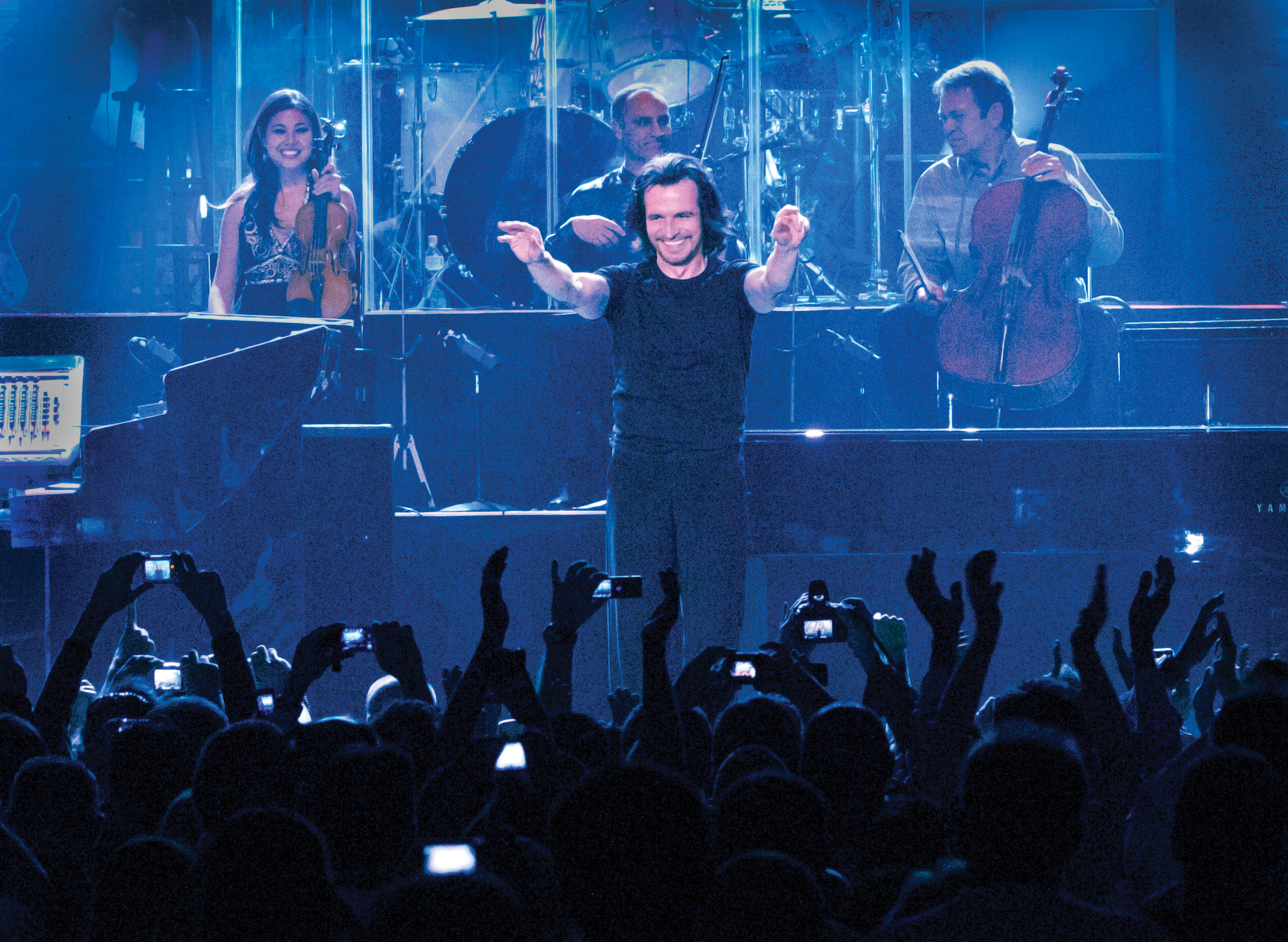


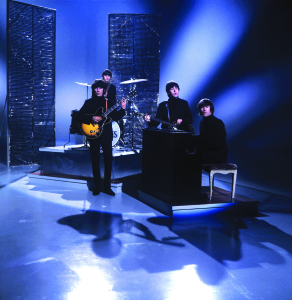

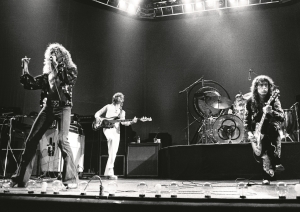
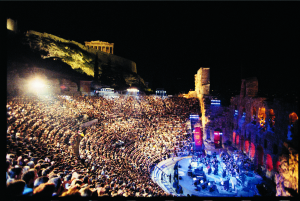
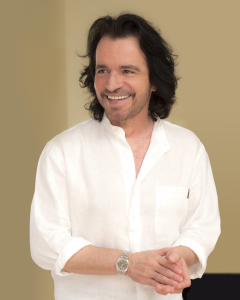
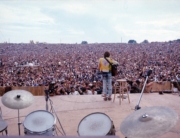

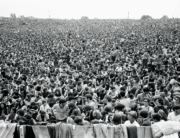

Amazing!! I just read one of the best interviews ever!! 2016 will be for sure a remarkable year for Yanni. Thank you for this awesome gift to all his fans all over the world!
yes, Alba…it is a great year for YANNI and the world, not just musically…
Agreed! Great interview
great interview – loved to hear of the technical aspects behind Yanni’s genius.
Amazing interview, where I really got an insight into the creative process of Yanni’s music. I don’t think I’ve ever seen him be so open to an interviewer before, the way he reveals all these details about how he creates and what he thinks like. I love Sensuous Chill, now I can’t wait for the Pyramids concert to come out!